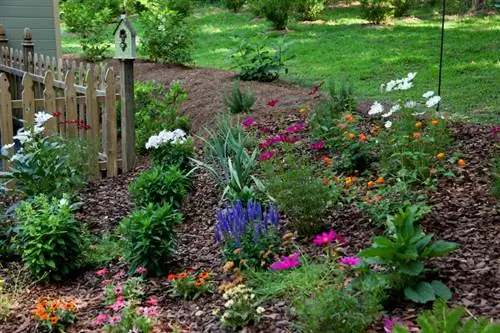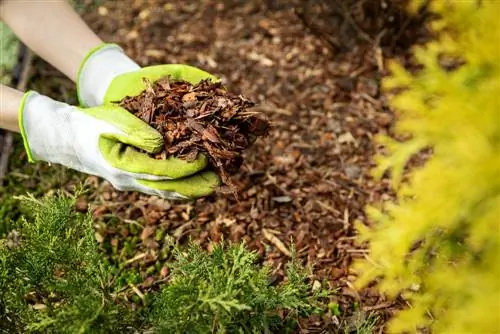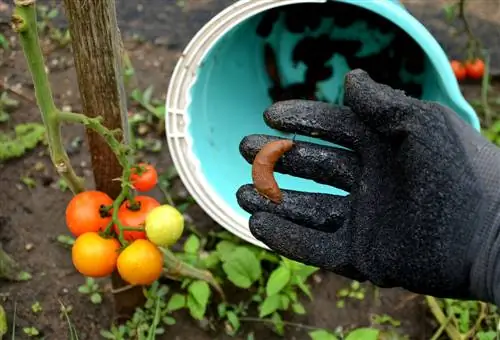- Author admin [email protected].
- Public 2023-12-16 16:46.
- Last modified 2025-01-23 11:22.
They feel comfortable where they are not at the mercy of the environment. In the garden, snails find a number of hiding places from which they escape in the evening and go looking for food. Bark mulch is part of it.

Does bark mulch encourage snails in the garden?
Bark mulch can attract snails because it creates a moist microclimate in which they feel comfortable. To prevent slugs in mulched beds, it is recommended to regularly shift the mulch layer, water properly, use alternative mulching materials and collect slugs regularly.
How snails live
The omnivores need a moist microclimate because they lose water and dry out in environments that are too dry. The shredded bark spread in the bed provides an ideal environment for the molluscs when moisture accumulates. The wetter the ground surface is, the more comfortable the unwanted garden visitors feel. Therefore, they are more common in older mulch applications. Here the animals find ideal hiding places and opportunities to lay eggs. The clutches overwinter between the protective pieces of bark so that the new generation can hatch next spring.
Typical species
Approximately 90 percent of all damage to vegetables and flower beds comes from the Spanish slug. It has hardly any natural enemies because it secretes large amounts of mucus. Externally it hardly differs from the native red slug. The tiger snail is one of the useful slugs because it eats snail eggs.
Prevention
A snail clutch can contain more than a hundred eggs. To prevent further spread, preventive measures are particularly important. These procedures are recommended for mulched areas to create an environment that is unfriendly to snails.
loose up the soil
To kill egg clutches and make the habitat unattractive for snails, you should regularly shift the mulch layer. This measure is particularly effective for containing molluscs in early spring and late autumn after the first frosts. The eggs laid open are destroyed by natural environmental influences.
Tip
Only apply bark mulch when it is pre-dried and in rain-free weather. This will prevent moisture from penetrating the material directly.
Watering correctly
To avoid waterlogging, you should water beds in the early morning and not in the evening. Snails are active at dusk and at night, so this approach means they find suboptimal living conditions. Avoid extensive watering. Basically, it is better to water the plants thoroughly and individually, directly at the base, every two to three days. This means that the invertebrates do not find large, moist areas.
Use alternative mulching materials
Mulch substrates made from aromatic-smelling plants such as thyme, lavender and rosemary are intended to deter snails. However, the essential fragrances evaporate quickly and are preserved in lower concentrations in dried plant parts. Therefore, use variants that are less prone to waterlogging. Straw or Miscanthus are good alternatives that do not ensure ideal conditions for snails.
Collect regularly
Offer the reptiles targeted hiding places in the area where they retreat during the day. Old roof tiles, clay flower pots or orange peel halves are suitable. Check these hiding places every morning and remove the uninvited guests.






